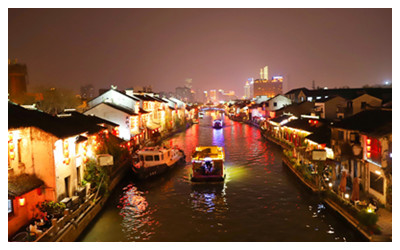Skype: neodalle-travel
Tel: +86 135 7447 2266
E-mail: sales@zhangjiajieholiday.com
 Derived from two city names of the province, Jiangning (Nanjing) and Suzhou, Jiangsu province is best known for its rich and fertile and many of its cities have a history more than 2,500 years. The province neighbors Anhui, Shandong, Zhejiang provinces and Shanghai, and is one of the most developed areas in China in economy, technology and culture.Administration Type: Province
Derived from two city names of the province, Jiangning (Nanjing) and Suzhou, Jiangsu province is best known for its rich and fertile and many of its cities have a history more than 2,500 years. The province neighbors Anhui, Shandong, Zhejiang provinces and Shanghai, and is one of the most developed areas in China in economy, technology and culture.Administration Type: Province
Capital: Nanjing City
Topography: Located in Yangtze River Delta, most of its land is flat, two of five largest freshwater lakes in China, hilly southwestern and northern borders.
Land Size: 102,600 km2
Population: 74,330,000 (2004)
Population Density: 724/km2
Ethnicity: 99.6% of its population is Han ethnical group, 0.2% is Hui ethnical group, 0.2% is others 54 minority ethnic groups.
Prefecture-level: 13 divisions (13 cities: Nanjing, Zhenjiang, Changzhou, Wuxi, Suzhou, Yangzhou, Taizhou, Nantong, Huia'an, Suqian, Yancheng, Xuzhou, Lianyungang)
County-level: 106 divisions (counties or cities)
Township-level: 1488 divisions (towns or townships)
Climate: Subtropics to warm temperate zone, with humid monsoon climate. Average temperature 13 - 16°C
Annual Precipitation: 724 - 1,120 mm.
Agriculture Produces: Principal crops are rice and wheat, plus barley, maize, soybean and potatoes, the major cash crops are cotton, rape seeds, sesame and tobacco as well as vegetables, gourds, fruits.
Industry: Four pillar industries including achinery, electronic, chemicals and automobile.
GDP: 1.5 trillion of RMB, ranked at the second in all provinces in China
Per Capita of GDP: 20,700 RMB per capita
Education: 105 higher leaning institutions (universities and college), student enrolment 741,00 in 2004.
 Ask Questions ?
Ask Questions ?